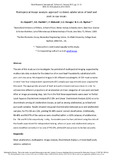JavaScript is disabled for your browser. Some features of this site may not work without it.
| dc.contributor.author | Ropodi, Athina | |
| dc.contributor.author | Pavlidis, Dimitrios | |
| dc.contributor.author | Mohareb, Fady R. | |
| dc.contributor.author | Panagou, Efstathios | |
| dc.contributor.author | Nychas, George | |
| dc.date.accessioned | 2019-08-23T09:26:21Z | |
| dc.date.available | 2019-08-23T09:26:21Z | |
| dc.date.issued | 2019-08-08 | |
| dc.identifier.citation | Ropodi AI, Pavlidis DE, Mohareb F, et al., (2015) Multispectral image analysis approach to detect adulteration of beef and pork in raw meats. Food Research International, Volume 67, January 2015, pp. 12-18 | en_UK |
| dc.identifier.issn | 0963-9969 | |
| dc.identifier.uri | https://doi.org/10.1016/j.foodres.2014.10.032 | |
| dc.identifier.uri | http://dspace.lib.cranfield.ac.uk/handle/1826/14463 | |
| dc.description.abstract | The aim of this study was to investigate the potential of multispectral imaging supported by multivariate data analysis for the detection of minced beef fraudulently substituted with pork and vice versa. Multispectral images in 18 different wavelengths of 220 meat samples in total from four independent experiments (55 samples per experiment) were acquired for this work. The appropriate amount of beef and pork-minced meat was mixed in order to achieve nine different proportions of adulteration and two categories of pure pork and beef. After an image processing step, data from the first three experiments were used for partial least squares-discriminant analysis (PLS-DA) and linear discriminant analysis (LDA) so as to discriminate among all adulteration classes, as well as among adulterated, pure beef and pure pork samples. Results showed very good discrimination between pure and adulterated samples, for PLS-DA and LDA, yielding 98.48% overall correct classification. Additionally, 98.48% and 96.97% of the samples were classified within a ± 10% category of adulteration for LDA and PLS-DA respectively. Lastly, the models were further validated using the data of the fourth experiment for independent testing, where all pure and adulterated samples were classified correctly in the case of PLS-DA, while LDA was proved to be less accurate. | en_UK |
| dc.language.iso | en | en_UK |
| dc.publisher | Elsevier | en_UK |
| dc.rights | Attribution-NonCommercial-NoDerivatives 4.0 International | * |
| dc.rights.uri | http://creativecommons.org/licenses/by-nc-nd/4.0/ | * |
| dc.title | Multispectral image analysis approach to detect adulteration of beef and pork in raw meats | en_UK |
| dc.type | Article | en_UK |
| dc.identifier.cris | 5614120 |
Files in this item
The following license files are associated with this item:
This item appears in the following Collection(s)
-
Staff publications (SWEE) [2880]

